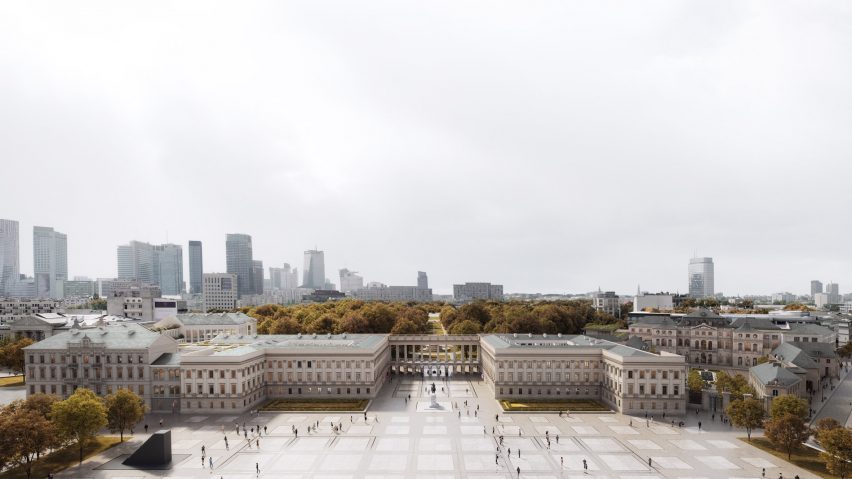
WXCA unveils plans to reconstruct Saxon Palace in Warsaw
Architecture studio WXCA has unveiled plans to rebuild Saxon Palace in Warsaw and replicate its facade from 1939, before the building was destroyed during world war two.
Occupying the same site as the original building, the reconstructed complex will house the Polish senate and serve as the headquarters of several cultural institutions.
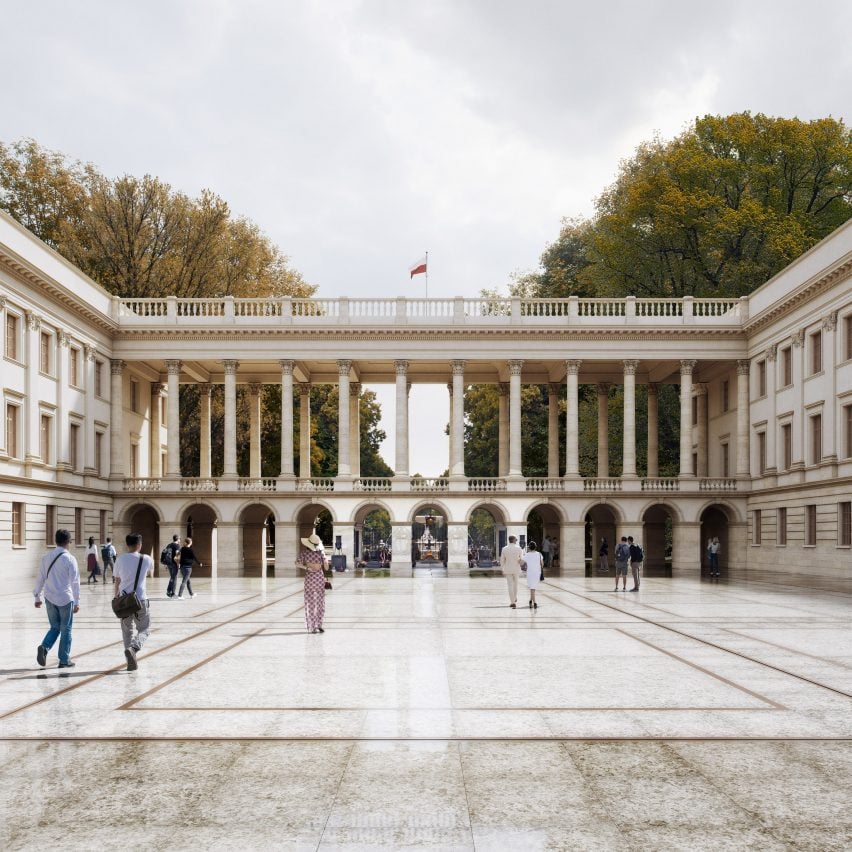
Saxon Palace was a prominent building located on Saxon Axis – an 18th-century development that also includes Saxon Garden and Piłsudski Square. Dating back to 1666, it was a "symbol of Warsaw", WXCA said, but was destroyed by the Nazis in 1944.
WXCA will rebuild its neoclassical-style facades as they looked following a remodel in 1842, while the building's internal layout will be altered to include courtyards and public spaces.
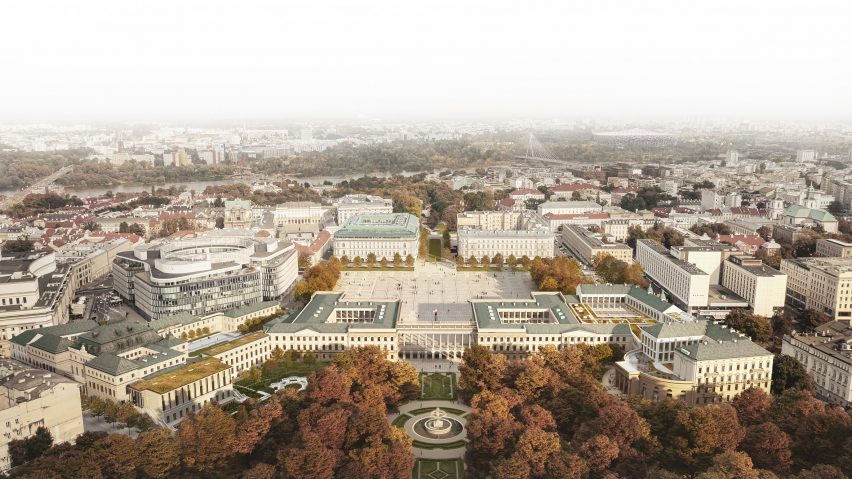
"For our team, the plan of the reconstruction of the Saxon Palace was conceived as an opportunity to create a new social and urban value," WXCA founder Szczepan Wroński told Dezeen.
Alongside Saxon Palace, the project will also involve the reconstruction of other buildings on Saxon Axis, including the rococo-style Brühl Palace and three townhouses.
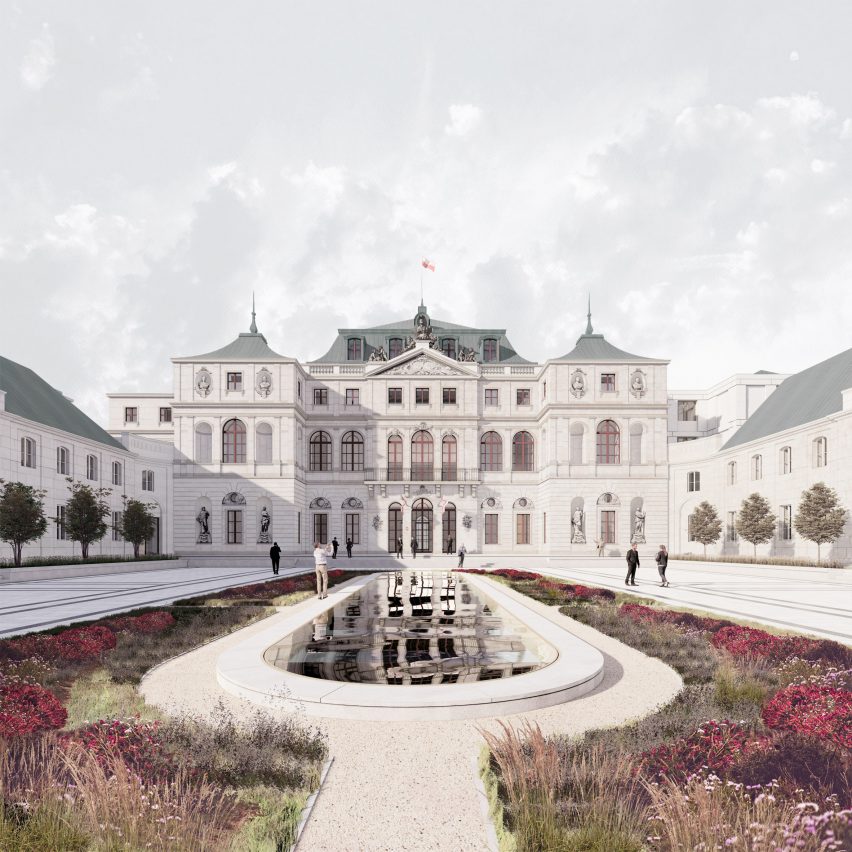
WXCA's design was the winning entry in a competition organised by the Polish Ministry of Culture and National Heritage with the Association of Polish Architects.
"The whole complex in the form we proposed in the competition is connected to the city and opens up to the residents thanks to the system of internal courtyards – new urban interiors stepping out into the urban space," added Wroński.
"Our proposal is to recreate an urban frame for the square and to complement the Saxon Axis through reconstruction, as well as creating a functional and resident-friendly part of Warsaw that could be an urban background for both everyday activities and top-ranking state events," Wroński continued.
Internal spaces in Saxon Palace will be built with reinforced concrete, designed to be more suited to contemporary needs and connected with the new courtyards. Some of the original building's bricks will be reused for internal finishes.
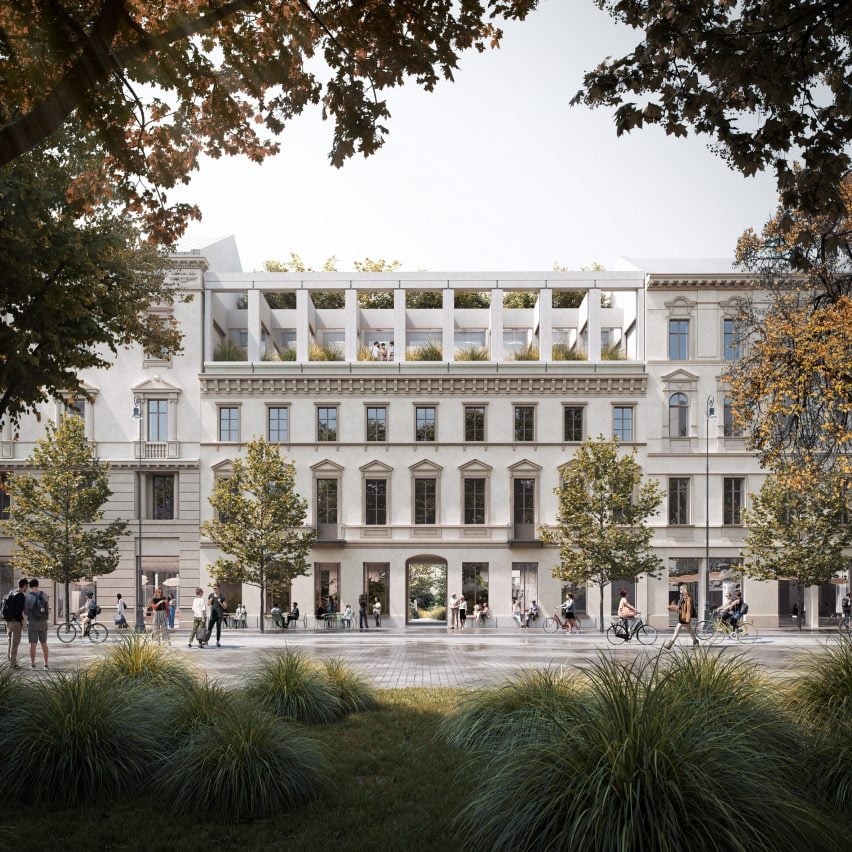
"The layout of the interiors of the palace will be adapted to modern-day utility functions," said WXCA architect Małgorzata Dembowska.
"Its architecture for inner courtyards is a contemporary interpretation of the pre-war character of the facades and structure of the building," she told Dezeen.
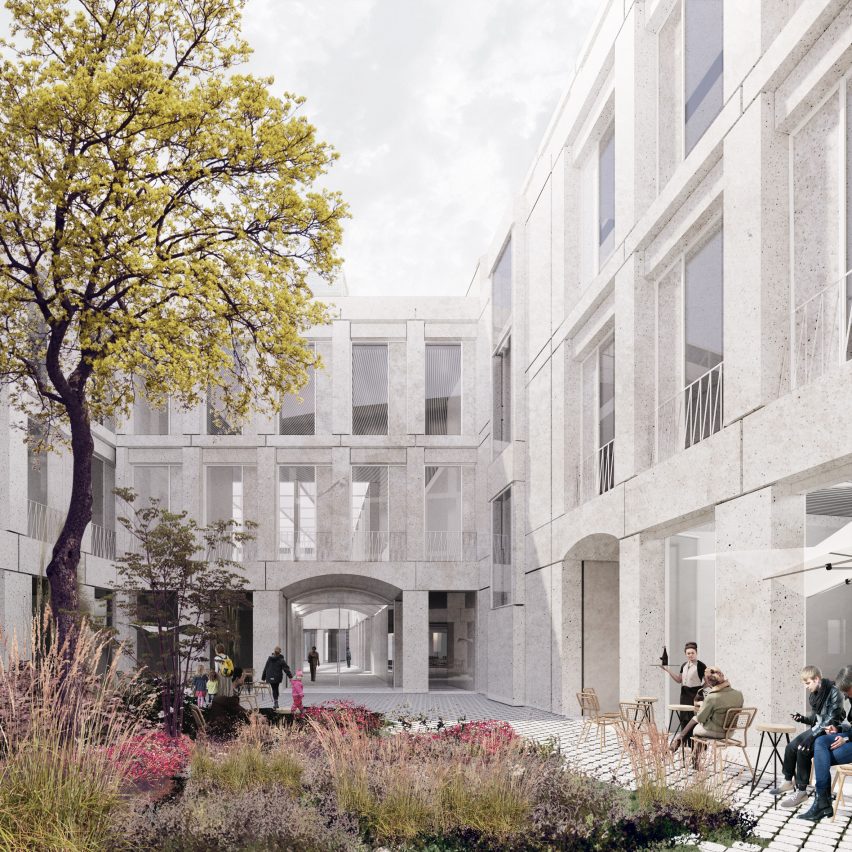
WXCA used archival photos and drawings of the building from 1939 to recreate the design of the palace facade.
"The architectural form of the Saxon Palace as it stood in 1939 is, in fact, the best documented one," said Dembowska.
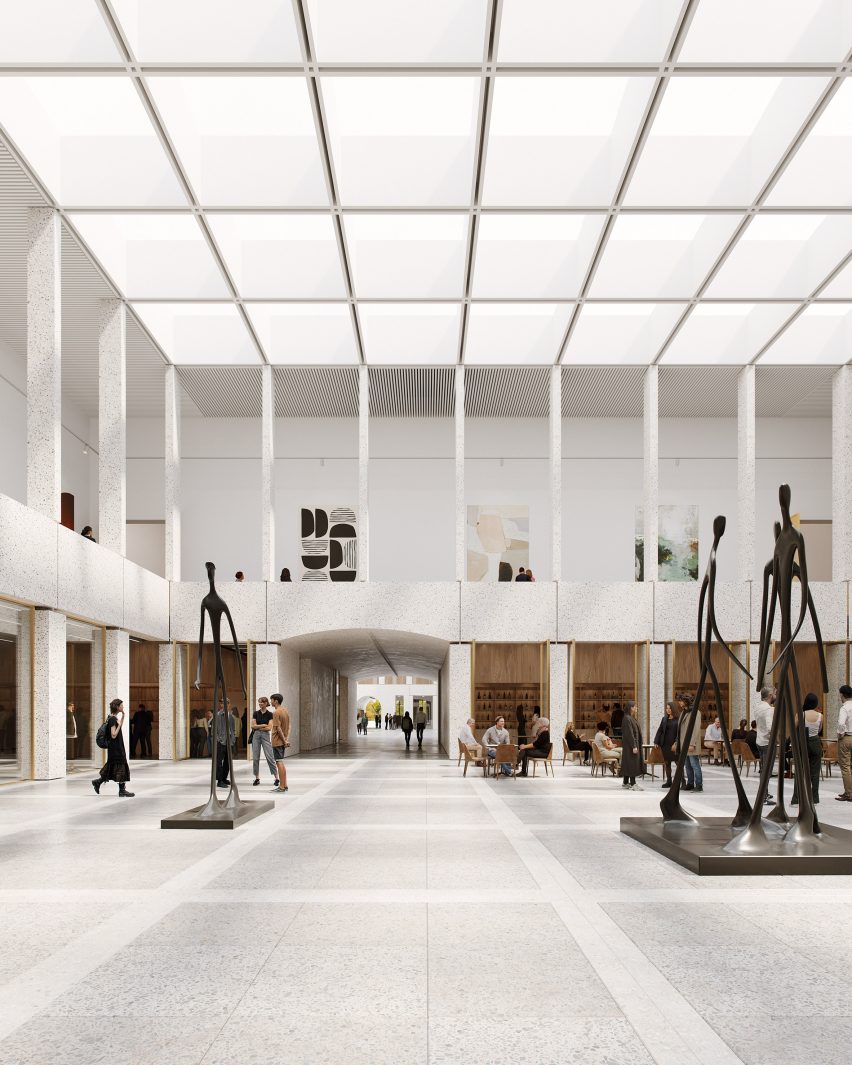
"We designed the replication of the original palace based on archival photographs and illustrations and architectural analysis provided by the competition organisers," added Dembowska.
The studio has previously designed a pink concrete extension for the Polish Army Museum in Warsaw and a museum in Palmiry punctured by bullet-sized holes, each one representing a Polish civilian murdered on the site during the holocaust.
The images are courtesy of WXCA.